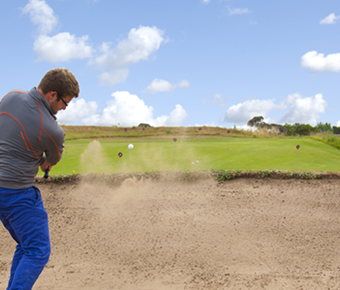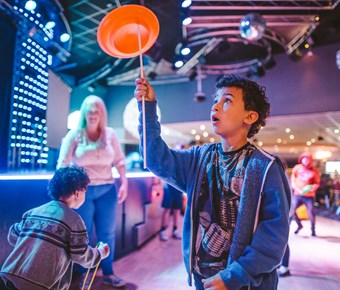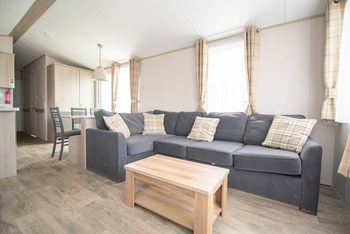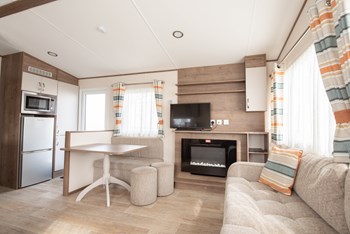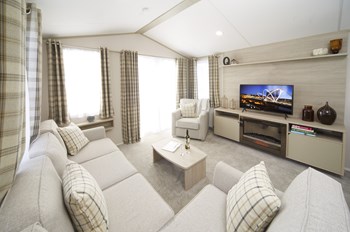It always pays to book direct with us - Secure your break for a low deposit! 🏕️
Burnham-on-Sea, a charming seaside town in Somerset, offers the perfect escape year round with its expansive sandy beaches and vibrant community spirit. Whether you're looking to unwind with a walk along the coastline or seek out more active pursuits, this coastal gem has a variety of attractions to suit every interest.
Despite its tranquil atmosphere, Burnham-on-Sea is far from quiet when it comes to things to do. There are plenty of family attractions for both the young and young at heart. For history enthusiasts, the town is steeped in historical landmarks. After a day of exploring you can settle in to the local dining scene. Whether you crave traditional fish and chips by the pier or something more refined, the eateries here cater to every taste.
Read on to discover the joys of Burnham-on-Sea, where every visit is as memorable as the last.
Beaches and Nature
In Burnham-On-Sea, your options for sun, sea, and natural beauty are abundant. Discover serene beaches and an oasis of wildlife right on your doorstep.
Burnham-On-Sea Beach
Burnham-On-Sea Beach is a long expanse of golden sand, complete with a distinctive lighthouse on stilts. It's perfect for a tranquil day by the water or a brisk walk along the esplanade. Be mindful of your surroundings and please help keep the beach tidy by disposing of litter properly.
Berrow Beach

Adjacent to Burnham, Berrow Beach offers a more secluded experience. Rich in nature, it's part of the second longest stretch of sand in Europe and is a favourite spot for bird watchers. Look for the shipwreck at low tide, but remember to respect the wildlife habitats by not disturbing the area.
Apex Park
Apex Park is a haven for both you and the local wildlife. With its fishing lake and opportunities to spot various birds and animals, it's ideal for nature enthusiasts. Bring your family to enjoy the playground, have a skate session, or simply enjoy a peaceful walk around the grounds.
Family Attractions
Burnham-On-Sea offers an abundance of activities perfect for a family day out. Whether you're looking to connect with nature at a farm park or seeking thrills at an amusement park, there's something to keep every member of the family entertained.
Animal Farm Adventure Park
At the Animal Farm Adventure Park, your little ones can delight in meeting a variety of animals. They can join the Cuddle Club to hold and learn about smaller animals or revel in the open spaces perfect for under 5's and under 3's. The farm park is an all-around family fun destination, ensuring kids are engaged and entertained.
Brean Theme Park

For families seeking adrenaline-pumping fun, Brean Theme Park is the go-to attraction. Offering a mix of rides suitable for all ages, your family can enjoy everything from dizzying slides to traditional fairground games. Make sure to purchase your tickets in advance to get quick access to all the attractions.
Historical Landmarks
When you visit Burnham-On-Sea, the historical landmarks are a testament to the town's rich heritage. Both the iconic Burnham Pier and the impressive Brean Down Fort offer a unique glimpse into the area's past, making them must-see destinations.
Burnham Pier
As one of the standout attractions of Burnham-On-Sea, Burnham Pier is the shortest in Britain and dates back to the late 19th century. Known for its traditional seaside charm, the pier is an enduring symbol of the town’s coastal history. It invites you to stroll along its length and enjoy the views and arcade games, akin to stepping back in time.
Brean Down Fort
For those with a passion for history and nature, Brean Down Fort is a National Trust site perched on a hill that commands panoramic views across the Somerset coast. This 19th-century fort is rich in military history and offers a trek with a rewarding vista.
Entertainment and Leisure
In Burnham-on-Sea, your leisure time is set to be a mix of classic cinema experiences and family fun at a vibrant leisure park. Whether you're seeking a relaxing afternoon watching the latest releases or an action-packed day with a variety of rides and games, you're in for a treat.
The Ritz Cinema
At The Ritz Cinema, you step back in time while enjoying modern blockbusters. This independent cinema offers a cosy atmosphere with a retro touch, perfect for a chilled evening. Linger over an ice cream at the interval, or grab some popcorn before you settle into your seat for the movie.
Brean Leisure Park
For a day full of excitement, head over to Brean Leisure Park. Offering an array of attractions for all ages, the park features a Brean Splash waterpark with indoor and outdoor slides and a massive Brean Play soft play area for kids. When you're ready for a break, there's a café to refuel and relax. If you're visiting in a group, look out for group discounts that add even more value to your adventurous outing.

Dining Experiences
In Burnham-On-Sea, you're treated to a selection of dining options where the blend of quality food and friendly staff create an inviting atmosphere. Whether you want to relax in a local café or enjoy the convenience of beachfront concessions, your taste buds are in for a delightful experience.
Local Cafés and Eateries
In the heart of town, find charming cafés that pride themselves on serving high-quality, homemade fare. You can expect a warm welcome from the local operators who often source ingredients locally to bring you a fresh and authentic taste of Somerset. Signature dishes often reflect the region's heritage, making these spots an essential part of your culinary journey.
Café Culture:
- Homemade scones and clotted cream
- Locally sourced coffee blends
- Artisan sandwiches
Beachfront Concessions
Walk along the beach and you'll discover delightful beachfront concessions. These stands are perfect for grabbing a quick snack or a cold drink while you take in the sea view. With an emphasis on convenience, these kiosks don't skimp on quality. Enjoy ice cream, fresh pastries, and light bites without straying far from the sand.
Beach Bites:
-
- Ice cream varieties: Classic, gelato, sorbet
- Fish and chips
- Refreshing beverages
Your culinary adventure in Burnham-On-Sea is both varied and satisfying, providing plenty of options to quench your thirst and satisfy your hunger no matter where you are in town.
Frequently Asked Questions
Burnham-on-Sea offers a rich variety of attractions and activities suitable for all ages. Whether you're planning a family trip, a solo adventure, or a relaxing day out, you'll find plenty of options to explore.
What are the top free attractions to visit in Burnham-on-Sea?
You can enjoy the natural beauty of Apex Park, a wildlife haven perfect for leisurely walks and picnics without spending a penny. Also, the historic Burnham-On-Sea Pier is free to visit and offers lovely seaside views.
Which activities are most suitable for adults in Burnham-on-Sea?
For adults, the local golf clubs provide a great opportunity to enjoy a round of golf with picturesque surroundings. If you're looking for relaxation, the town's various restaurants and pubs offer a chance to eat local cuisine and unwind with friends.
What are the best family-friendly activities in Burnham-on-Sea?
For a family day out, the Brean Splash Waterpark offers fun slides and a toddler pool. The beaches of Burnham-on-Sea are ideal for sandcastle building, paddling, and enjoying traditional seaside activities.
Can you recommend some day trip destinations from Burnham-on-Sea?
Consider a day trip to nearby cities like Bristol or Bath, which are easily accessible and offer a wealth of historical and cultural attractions. For nature escapes, consider the stunning Mendip Hills, which are just a short drive away or venture slightly further afield and experience the incredible Wookey Hole. Also within a short drive is Weston-Super-Mare, if you are looking for even more activities and places to explore.
What are the most popular outdoor attractions in Burnham-on-Sea?
Outdoor enthusiasts will appreciate the unspoiled beaches of Burnham-on-Sea, which are perfect for long coastal walks. The Burnham and Berrow Golf Club provides a challenging coastal links course for golfers looking for an outdoor activity.
Are there any swimming restrictions at Burnham-on-Sea beaches?
During certain times of the year, there may be swimming restrictions due to strong tides and currents. It's important to heed local advice and observe any posted signs regarding swimming safety on Burnham-on-Sea beaches.
Key Takeaways
- Burnham-on-Sea offers a balance of serene beach walks and engaging attractions for all ages.
- The town is a hub for family-friendly activities and historical exploration.
- TripAdvisor showcases the high ratings of the town's popular spots, complemented by visitor reviews and photos.



